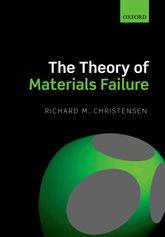ABSTRACT
The study of networks, including computer networks, social networks, and biological networks, has attracted enormous interest in recent years. The rise of the Internet and the wide availability of inexpensive computers have made it possible to gather and analyse network data on an unprecendented scale, and the development of new theoretical tools has allowed us to extract knowledge from networks of many different kinds.
The study of networks is broadly interdisciplinary and developments have occurred in many fields, including mathematics, physics, computer and information sciences, biology, and the social science. This book brings together the most important breakthroughts in each of these fields and presents them in a unified fashion, highlighting the strong interconnections between work in different areas.
Topics covered include the measurement of networks; methods for analysing network data, including methods developed in physics, statistics, and sociology; fundamentals of graph theory; computer algorithms, including spectral algorithms and community detection; mathematical models of networks such as random graph models and generative models; and models of processes taking place on networks.
Keywords: Networks, computer networks, social networks, biological networks, Internet, physics, mathematics, statistics, computer science, information science, biology, social science
Vydané v roku 2018
DOI: 10.1093/oso/9780198805090.001.0001
ABSTRACT
This book provides a complete and comprehensive development of failure theory for homogeneous materials. The resultant failure criteria to be used for applications with isotropic materials are calibrated by only two properties: the uniaxial tensile and compressive strengths, T and C. From these data the entire family of failure envelopes can be generated for all states of stress.
The account begins with a historical survey that includes the efforts of many of history’s greatest scientists. The complete inadequacy for general applications of all the historical forms are detailed. The center point of the book is the derivation of the failure theory for isotropic materials. The new and enabling technical insight is that of an organizing principle whereby the entire spectrum of isotropic materials types can be characterized by their strengths ratio, T/C, with stress being non-dimensionalized by C. Two coordinated but competitive failure criteria then emerge.
One of several unique features of the book is a full and complete treatment of ductile versus brittle behavior for isotropic materials. Along with the experimental evaluation of the failure theory, many examples of failure behavior and applications are presented. The relationship to fracture mechanics is also included. The overall coverage is very broad, but with no compromise in quality or rigor. Reasonably extensive treatments are given for fiber composites failure as well as investigations into microscale and nanoscale aspects of failure. The book is completed with a probe into damage models and a fairly complete derivation of probabilistic failure and life prediction.
Keywords: failure, failure theory, failure criteria, polynomial invariants, fracture criterion, ductile, brittle, fiber composites, microscale, nanoscale, life prediction, probabilistic failure, damage
Vydané v roku 2013
DOI: 10.1093/acprof:oso/9780199662111.001.0001


